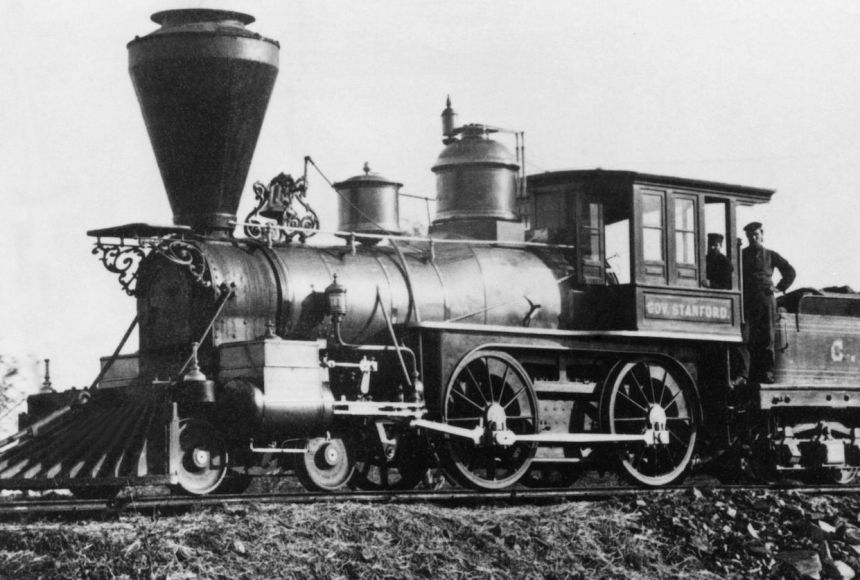The ability to transport goods and people efficiently is at the core of economic life in modern societies. A brief look at the early United States dramatically illustrates this principle. In the first half of the 19th century, Americans built a strong transportation network. Improving technology changed the ways of moving people and goods. Soon impressive feats of engineering transformed the North American continent. Overland roads, canals, and railways greatly expanded economic opportunities.
During the colonial and revolutionary periods, most of the nonindigenous population of North America lived near the Atlantic coast. Eighteenth-century America depended chiefly on water transportation to link small farms with transatlantic trade. Farmers living near the Hudson River or other river systems could float their crops downstream to the port cities. Artisans had to transport their products the same way. Travel overland was slow and difficult. Post roads between the colonies had been built by the mid-1700s, but were unsuitable for commercial transport.
Toll Roads Boost Regional Commerce
In 1794, a new road opened between Philadelphia, Pennsylvania, and Lancaster, Pennsylvania. It was the country's first toll road, built by a private corporation, which was chartered by the state. Soon other groups of merchants were incorporating to pave similar roads. By the early 1820s, thousands of kilometers of graded routes crisscrossed the region. The toll roads provided a major boost to regional commerce. The federal government paid for one major highway during this era: the Cumberland Road. Begun in 1811, it extended westward from Cumberland, Maryland. By 1818, it had crossed the Appalachian Mountains and reached Wheeling, Virginia. It permitted overland travel between the Potomac and Ohio rivers.
Canals Helped To Create Great Port Cities
Canals gave the waterway transportation system still greater reach. The largest and most important was the Erie Canal. It was approved by the New York State legislature in 1817 and completed eight years later. It extended from Buffalo to Albany. It was 12.1 meters (40 feet) wide on the top and 1.2 meters (four feet) deep. This mighty engineering feat created a human-made waterway connecting the Great Lakes to the Hudson River. The Hudson, in turn, empties into the Atlantic Ocean at New York City. The Erie Canal greatly reduced both the travel time and the cost of shipping products such as grain and lumber from the Midwest to the Eastern seaboard. It led to an immediate and dramatic increase in the shipment of such goods. By the 1840s, New York City had become the nation's leading commercial port. The city was also well established as the country's financial and trade capital.
Other state governments hoped to copy New York's success. They began many similar publicly financed canal projects. By 1840, the United States had more than 4,828 kilometers (3,000 miles) of canals. Both Ohio and Indiana built their own canal systems. They connected the Ohio River to Lake Erie. The Illinois & Michigan Canal, completed in 1848, established a water link between the Mississippi River Valley and the Great Lakes. It helped the city of Chicago, Illinois, become the great transport hub of the Midwest.
Trains Transport Goods at Low Cost
The steam-powered locomotive ultimately had the most far-reaching impact. Trains were a heavy-duty, fast, year-round transport solution. In time, they became the preferred option for commercial shipping. The earliest U.S. railroads covered only short distances, providing portage between waterways. In 1827, a group of Baltimore, Maryland, businessmen formed a corporation to build the first major railway between their city and the Ohio River. Many more private railway enterprises followed in the decades prior to the Civil War. Between 1840 and 1860, the nation saw a ten-fold increase in the amount of track laid, from 4,828 to 48,280 kilometers (3,000 to 30,000 miles). The majority of this development was in the northern states. The first transcontinental line was established in 1869. Eventually, the railways lowered the cost of transporting many kinds of goods.
A National Economy Made Possible
These advances in travel and transport helped drive settlement in the western regions of North America. They were also essential to the nation's industrialization. The development of steamboats and the canal system made it possible for farmers to settle in the fertile lands of the Midwest and Southwest. Constantly improving transport systems gave them an efficient and inexpensive means to deliver their goods to market. The resulting growth in productivity was staggering. Between 1829 and 1841, for example, the amount of wheat delivered along the Erie Canal rose from 3,640 bushels to one million bushels. Busy transport links stimulated the growth of cities, especially New York and Chicago, but also towns such as Buffalo; Pittsburgh, Pennsylvania; and St. Louis, Missouri. The transportation system helped make a national economy possible.

